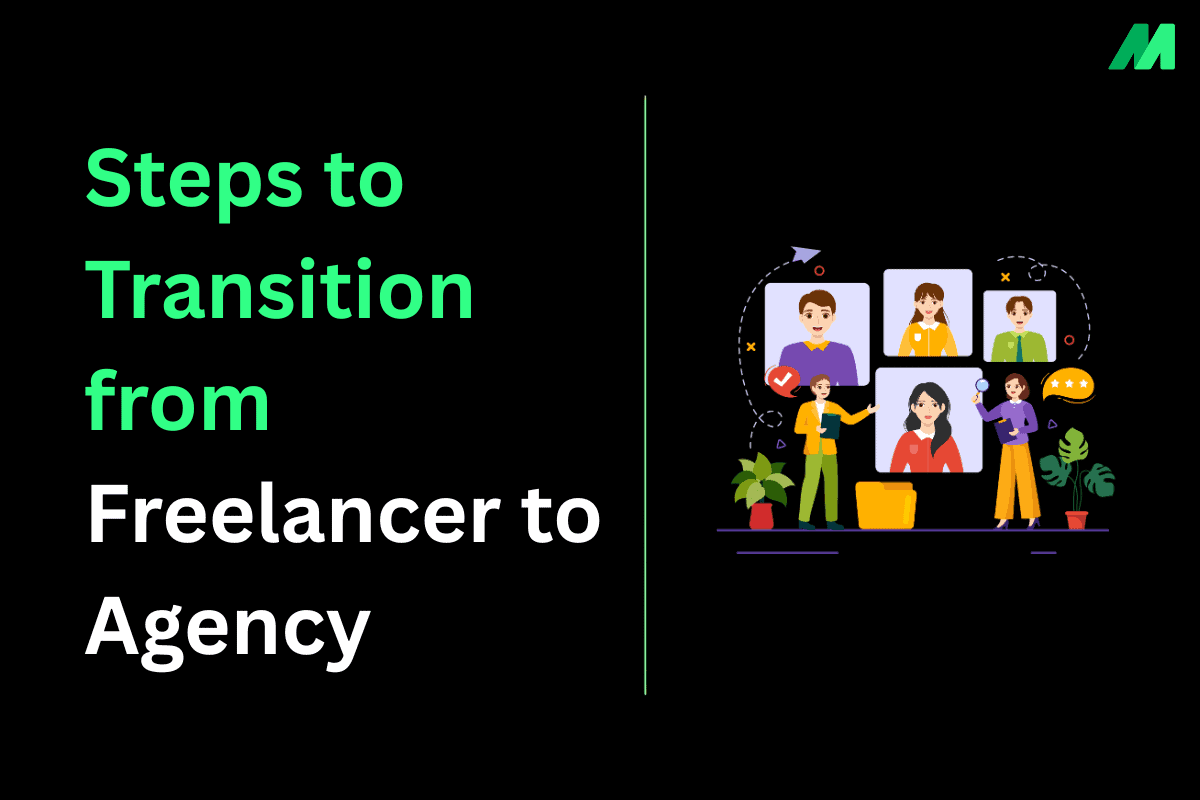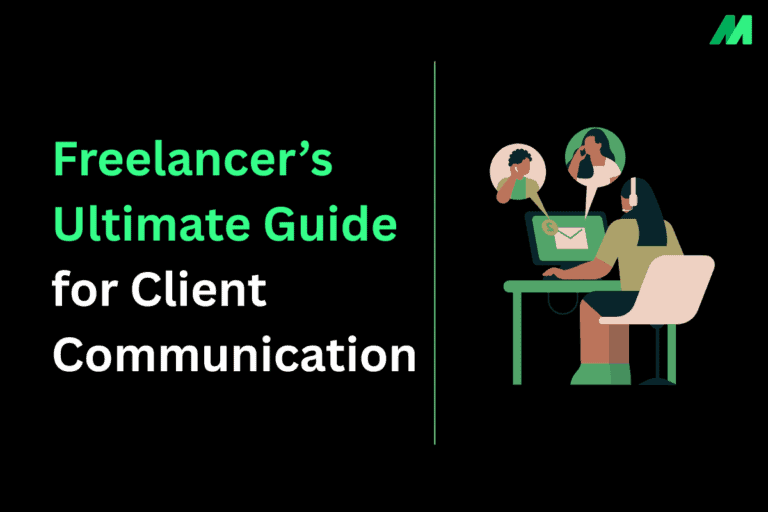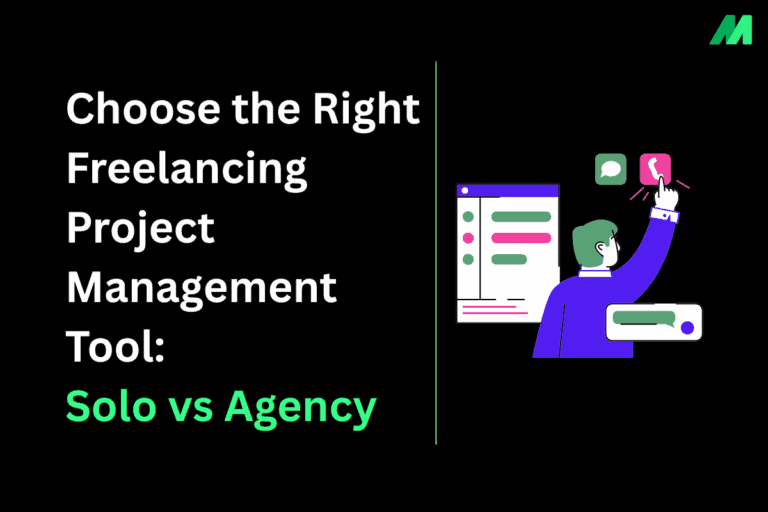Going from freelancer to agency owner isn’t just about chasing higher revenue. It’s about building something bigger, reclaiming your time, diversifying your impact, and creating a team that goes beyond your solo limits. This journey is both thrilling and demanding, filled with mindset shifts, real challenges, and the chance for dramatic transformation.
Freelancer to Agency Transition Steps
Discover the essential freelancer to agency transition steps that unlock growth beyond solo work. This guide covers mindset shifts, building client pipelines, hiring smartly, and systemizing your agency for scalable success and greater impact in your creative business.
Treat Yourself Like an Agency
90% of this shift begins in your mind. Freelance agency founders from Millo’s podcast insist the first change is talking and acting as a team, even if the “team” is initially just you. Swap “I” for “we,” choose a business name, and aim for a brand identity that’s more than personal.
Benjamin Goodey, for example, started using “we” and a new business name before he had a formal team, signaling bigger ambitions.
Build Your Client Pipeline Before You Scale
A clear sign you’re ready is having too much work for one person. You can start building the systems for steady, qualified clients. Focus not just on traffic or likes, but conversions and high-value, recurring client relationships.
Shawn Johnston, after getting overwhelmed as a freelancer, focused on client pipeline: refining his outreach, filtering clients, and creating a signature onboarding process.
Create Systems for Client Intake and Delivery
Agencies run on processes: for sales, onboarding, project management, feedback, and delivery. Use project management software (e.g., Trello, Asana, Notion) to avoid chaos.
Ask: Who owns each step? How are triggers and deadlines communicated?
Alexander Berman scaled his agency by standardizing project handover and feedback loops.
Detailed Actionable Checklists
- Rebranding Checklist: Business name, logo, website, social media profiles, email domains.
- Hiring Checklist: Define role, draft job description, find candidates, interview process, and onboarding protocol.
- Systems Setup Checklist: Create SOPs, select project management tools, automate client onboarding, and set quality checks.
Get Organized, Legally Covered, and Financially Smart
Most freelancers worry too soon about legal structure, but Millo’s founders ran agencies for years as sole proprietors only switching to LLC when hiring full-time employees became necessary.
Register your company, open a business bank account, and update contracts for both clients and staff. If you’re hiring only contractors remotely, registration is less urgent but inevitable as you scale.
Hire for Revenue, Not Overhead
The best first hires?
Team members who make money for you: billable freelancers, sales/marketing pros, niche experts. Accountant, legal, and HR hires come later; use software to fill gaps at first.
Karl from the Millo podcast scaled fastest by hiring 50+ contractors in year one, not full-timers: lean, flexible, and focused on cash flow.
Financial Planning Tips
- Track monthly revenue vs. expenses carefully.
- Budget for hiring costs, salaries, and software tools.
- Keep a cash reserve for 3-6 months of payroll.
- Reinvest profits into marketing and team development.
- Use accounting tools like QuickBooks, FreshBooks, or Wave.
Shift Your Focus to Sales and Marketing
Agency owners spend much more time on sales than freelancers. Don’t get stuck only on the creative side; your real job is generating leads, making deals, and empowering your team to deliver top service.
If sales aren’t your passion, consider hiring a business development manager or partnering with marketers.
“Quality is the best marketing tool, but don’t rely on it alone,” says Shawn Johnston.
Systemize Delivery, Feedback, and Scale
Each client project should follow a mapped process, with clear handoffs, communication channels, and review points. Automate milestones and approvals to remove roadblocks.
Agencies like Rued Riis Animation scaled by training new hires in SOPs and delegating routine work, freeing up senior staff for strategy and creative innovation.
Common Mistakes and Pitfalls to Avoid
- Hiring too quickly before consistent cash flow.
- Neglecting sales and pipeline building while focused on delivery.
- Trying to do everything alone instead of delegating.
- Poor client filtering leading to difficult projects.
- Over-optimistic financial projections.
Advice: Include practical recovery tips like adopting lean hiring, outsourcing sales, and improving client qualification.
Watch Your Numbers and Guard Your Profit
Track revenue, cash flow, expenses, and profitability religiously. As your headcount and fixed commitments grow, margin management becomes life-or-death for your business. Use entry-level accounting/bookkeeping tools until you’re ready to hire pros.
Celebrate Wins, Build Culture, and Have Fun
Don’t forget to enjoy the process. Agency life is unpredictable, but it’s also an opportunity to shape a business culture, mentor talent, and achieve freedom beyond solo freelancing.
Founders like Mike (Millo) and James (MentorCruise) use their success to mentor others and invest in new ventures, reclaiming time and lifestyle benefits. James’s journey led him to move with his family to Portugal, building not just a business but a fulfilling life.
| Step | Example Owner/Brand | Key Tactic |
| Agency Mindset | Benjamin Goodey | Rebranding, “we” language |
| Client Pipeline | Shawn Johnston | Onboarding, filtering |
| Systems & SOPs | Alexander Berman | Automated handover |
| Financial Setup | Karl (Millo podcast) | Contractor-first hiring |
| Creative Leadership | Rued Riis | SOPs, team culture |
| Lifestyle Impact | James (MentorCruise) | Business/life balance |
Examples of resources
- Online courses: Udemy’s “Build Your Agency,” Coursera’s project management classes.
- Templates: Contract templates, SOP samples, business plan outlines.
- Registration guides: Government small business portals for LLC/LLP registration.
- Tools: Trello, Asana, Slack, FreshBooks.
- Communities: Freelance to Founder Facebook group, Agency Trailblazers on LinkedIn, MentorCruise.
Ready to start?
- Choose a new agency name.
- Build your own onboarding checklist.
- Start trialing hires. One contractor at a time.
- Practice pitching as an agency.
- Reach out to mentors and join founder groups for daily learning and support.
FAQs
Q: When should I hire my first employee?
A: When the client workload exceeds what you can handle efficiently and consistently.
Q: How do I maintain quality as I scale?
A: Standardize workflows and have quality review points.
Q: How do I balance client work with running the agency?
A: Delegate operational tasks and set aside time for leadership activities.
Q: What legal structure should I choose?
A: Depends on your location; LLC and LLP are common options.
Q: How do I find good freelance contractors or employees?
A: Use platforms like Upwork, referrals, or niche job boards.
Moving from freelance to agency owner is one of the most valuable transitions you can make in your career. It is not a simple movement of business structure; it is an evolution in mindset, identity, and scale of impact. This transition requires courage, tenacity, and adaptability, but also has some exciting potential for growth, liberation, and contribution to legacy.
The road will not always be easy to navigate. You will face challenges such as updating your selling habits, empowering delegation, managing cash flow, and developing a team culture. You will find that these challenges are some of the same challenges that established agency owners went through the ones who built an agency and not simply a practice, and not only survived but thrived.




